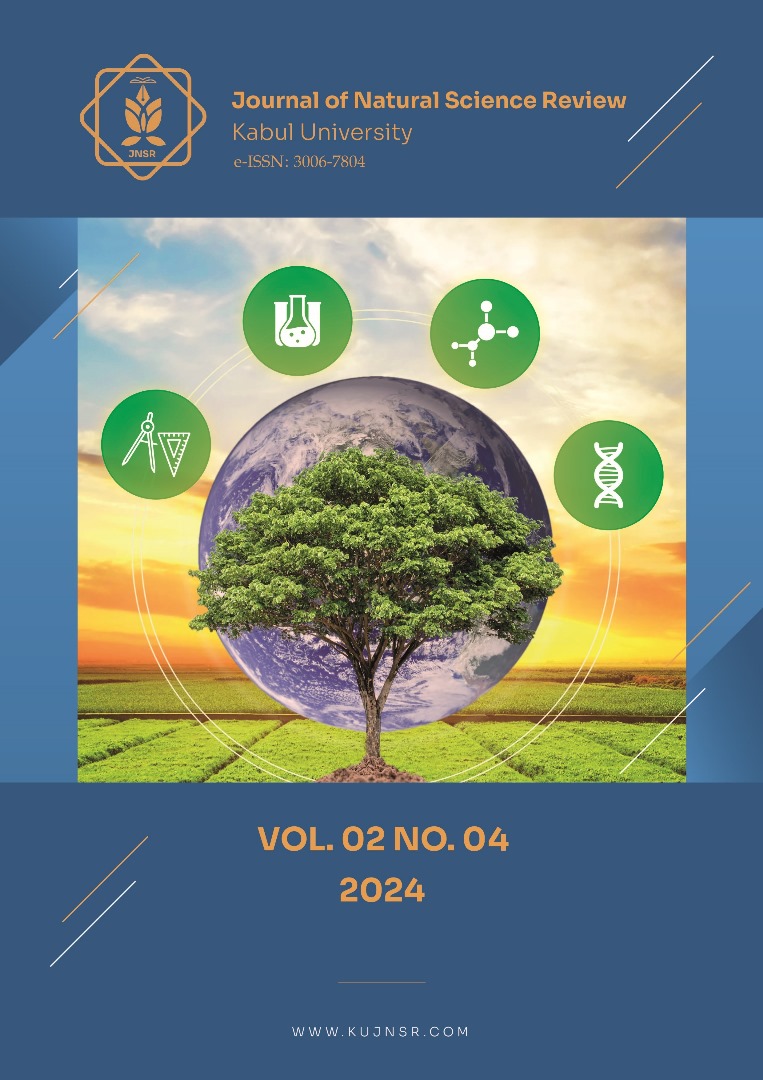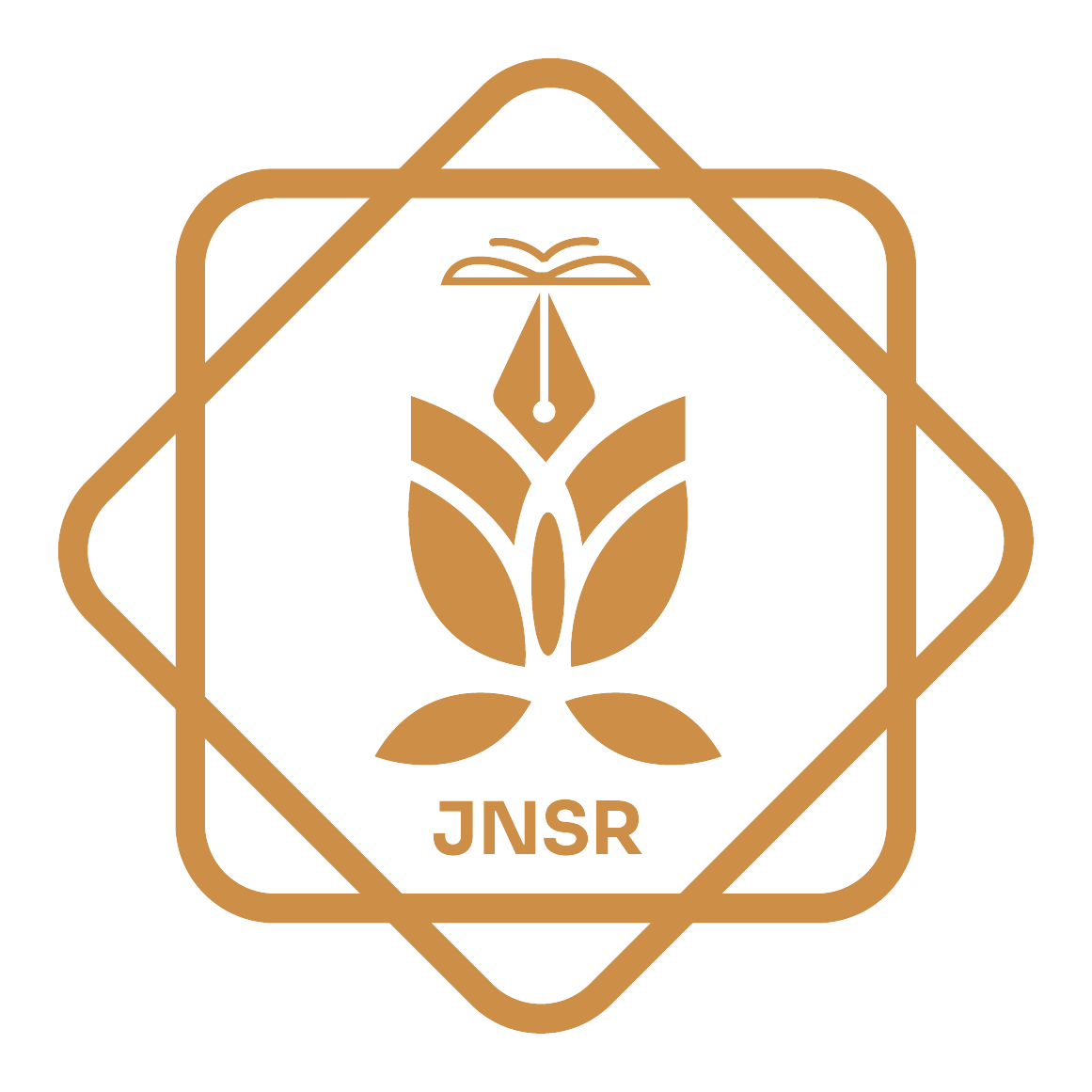Analysis of Climate Change Impacts on Water Resources in Harirod-Murghab River Basin
DOI:
https://doi.org/10.62810/jnsr.v2i4.52Keywords:
Climate Change, Precipitation, Harirod - Murghab River Basin, Temperature, Mann-Kendall Trend TestAbstract
Climate change represents one of the paramount challenges confronting humanity today. The profound impacts of phenomena such as changes in precipitation patterns, global warming, polar ice melt, floods, and the onset of untimely and extreme temperatures worldwide have instilled a sense of urgency and concern. This critical issue has been placed at the forefront of climate change. To understand the ramifications of climate change on water resources within the Harirud-Marghab River basin, an analysis of average precipitation and temperature variations (including minimum, maximum, and average values) across different time frames (annual, monthly, seasonal, and during wet and dry seasons) has been conducted using data from hydrometeorological stations in the catchment area from 1979 to 2022. the non-parametric Mann-Kendall and PCI methods were chosen as the analytical tools. The findings reveal a notable decline in annual rainfall within the Harirud-Marghab River basin, with a pronounced reduction during the winter, the basin's primary water season. Conversely, an increase in seasonal rainfall has been observed in summer and autumn. Overall, rainfall in this river basin tends to be intense, occurring on limited days throughout the year. Furthermore, a significant rise in the annual average temperature has been documented, alongside fluctuations and changes in water flow across most stations within the basin. Consequently, the surface water resources of the Harirud-Marghab River basin have experienced a substantial decrease, amounting to approximately 29% of its capacity, equivalent to a reduction of 0.98 billion cubic meters of water.
Downloads
References
Ansari, M., Noori, G., & Fotohi, S. (2017). Investigating Temperature Precipitation and Flow Trend Using Non-para metric Mankendall (Case Study: Kaju River in Sistan and Baluchestan). Journal of Watershed Management Research, 7(14), 158–152. https://doi.org/10.29252/jwmr.7.14.158
Ansari, M., Noori, G., & Fotohi, S. (2017). Investigating Temperature Precipitation and Flow Trend Using Non-parametric Mankendall (Case Study: Kaju River in Sistan and Baluchestan). Journal of Watershed Management Research, 7(14), 158–152. https://doi.org/10.29252/jwmr.7.14.158 DOI: https://doi.org/10.29252/jwmr.7.14.158
Asghari Jafarabadi, M., & Mohammadi, M. (2015). STATISTICAL SERIES: COMMON NON-PARAMETRIC METHODS. Iranian Journal of Diabetes and Metabolism, 14(3), 145–162. https://journals.tums.ac.ir/ijdld/article-1-5364-en.html
Azizi, Q. (2004). Climate change. Qom’s publishing, Tehran. https://link.springer.com/article/10.1007/s00704-018-2395-7
Bahak, B. (2013). Investigating the Likelihood of Climate Change in Kerman Province Using the Mann-Kendall Method (Case Study: Kerman Station). Geographical Quarterly of Land, 10(39), 65–72. http://ensani.ir/fa/article/487719/
EE, E., CP, N., & GN, C. (2017). Analysis of Precipitation Concentration Index (PCI) for Awka Urban Area, Nigeria. Hydrology: Current Research, 08(04). https://doi.org/10.4172/2157-7587.1000287 DOI: https://doi.org/10.4172/2157-7587.1000287
Falsafizadeh, F., & Saboui Sabouni, M. (2012). Study of the effects of climate change on agricultural production in Shiraz. Journal of Agricultural Economics and Development, 26(4), 272–286. https://doi.org/10.29252/envs.17.4.75 DOI: https://doi.org/10.29252/envs.17.4.75
Geden, O. (2016). The Paris Agreement and the inherent inconsistency of climate policymaking. WIREs Climate Change, 7(6), 790–797. https://doi.org/10.1002/wcc.427 DOI: https://doi.org/10.1002/wcc.427
Intergovernmental Panel on Climate change. (2007). A report of Working Group I of the Intergovernmental Panel on Climate Change, Summary for Policymakers. https://www.ipcc.ch/site/assets/uploads/2001/04/doc3d.pdf
Iqbal, M., & Koenen, S. (2021). Afghanistan and the Phenomenon of Climate Change. Academy of Sciences Public Information and Communication Directorate. https://asa.gov.af/dr/
Iqbal, M. W., Donjadee, S., Kwanyuen, B., & Liu, S. (2018). Farmers’ perceptions of and adaptations to drought in Herat Province, Afghanistan. Journal of Mountain Science, 15(8), 1741–1756. https://doi.org/10.1007/s11629-017-4750-z DOI: https://doi.org/10.1007/s11629-017-4750-z
Kamal, G. M. (2004). Watershed Atlas of Afghanistan. Kabul, basin. Part IV. http://www.cawater-info.net/afghanistan/pdf/afg_wat_atlas_part_4.pdf
Kemfert, C. (2008). Climate Protection Requirements –the Economic Impact of Climate Change. In Handbook Utility Management (pp. 725–739). Springer Berlin Heidelberg. https://doi.org/10.1007/978-3-540-79349-6_42 DOI: https://doi.org/10.1007/978-3-540-79349-6_42
Mahsa Bagherpour, Morteza Seyedian, Abolhasan Fathabadi, & Amin Mohamadi. (2017). Study of Mann-Kendall test performance in detecting the series of autocorrelation. Iran Journal of Water of Management Science, 11(36), 11–21. https://www.sid.ir/paper/134722/
Mann, H. B. (1945). Non-parametric Tests Against Trend. Econometrica, 13(3), 245. https://doi.org/10.2307/1907187 DOI: https://doi.org/10.2307/1907187
McSweeney, C., New, M., Lizcano, G., & Lu, X. (2010). The UNDP Climate Change Country Profiles. Bulletin of the American Meteorological Society, 91(2), 157–166. https://doi.org/10.1175/2009BAMS2826.1 DOI: https://doi.org/10.1175/2009BAMS2826.1
M.G. Kendall. (1975). Rank correlation methods (Charles Griffin Book Series. Oxford University Press, London-UK. https://www.scirp.org/reference/ReferencesPapers?ReferenceID=2099295
Momeni, Q. (2011). The Potential Impacts of Climate Change on Agricultural Sector in Fars Province. Master’s thesis. Shiraz University. https://doi.org/10.22067/jead2.v0i0.29418
Nasrati, R. (2018). Investigation of Drought in the Recent Half Century in the Country. Public Information and Communication Directorate, Academy of Sciences.
Nejad, A. M., & Qasemi, S. (3013). Temperature Change Trend Using the Mann-Kendall Method (Case Study: Four Districts of Chahar Mahal and Bakhtiari Province). Environmental Planning Quarterly, 37, 140–166. https://www.magiran.com/p1738188
NEPA. (2012). Afghanistan Initial Nationl Communication to the United Nation Framework Convention on Climate change. https://neis.nepa.gov.af/public/rGliZMFIE6
Nourani, V., Ghasemzade, M., Mehr, A. D., & Sharghi, E. (2019). Investigating the effect of hydroclimatological variables on Urmia Lake water level using wavelet coherence measure. Journal of Water and Climate Change, 10(1), 13–29. https://doi.org/10.2166/wcc.2018.261 DOI: https://doi.org/10.2166/wcc.2018.261
Oliver, J. E. (1980). MONTHLY PRECIPITATION DISTRIBUTION: A COMPARATIVE INDEX. The Professional Geographer, 32(3), 300–309. https://doi.org/10.1111/j.0033-0124.1980.00300.x DOI: https://doi.org/10.1111/j.0033-0124.1980.00300.x
Reshteen, S., Rahmatzai, A., & Safi, A. G. (2024). Urban Water Crisis in Kabul City: Key Challenges and Solutions. Journal of Natural Science Review, 2(3), 138–150. https://doi.org/10.62810/jnsr.v2i3.51 DOI: https://doi.org/10.62810/jnsr.v2i3.51
Río, S. del, Herrero, L., Fraile, R., & Penas, A. (2011). Spatial distribution of recent rainfall trends in Spain (1961–2006). International Journal of Climatology, 31(5), 656–667. https://doi.org/10.1002/joc.2111 DOI: https://doi.org/10.1002/joc.2111
S Soltani, & R Sabohi. (2008). Trend Analysis of Climatic Factors in Great Cities of Iran. Journal of Agricultural Science and Technology, 12(46). http://jstnar.iut.ac.ir/article-1-1125-en.html
Shahid, S. (2010). Rainfall variability and the trends of wet and dry periods in Bangladesh. International Journal of Climatology, 30(15), 2299–2313. https://doi.org/10.1002/joc.2053 DOI: https://doi.org/10.1002/joc.2053
Sidiqi, M., Shrestha, S., & Ninsawat, S. (2018). Projection of Climate Change Scenarios in the Kabul River Basin, Afghanistan. Current Science, 114(06), 1304. https://doi.org/10.18520/cs/v114/i06/1304-1310 DOI: https://doi.org/10.18520/cs/v114/i06/1304-1310
Tenzing, J. D. (2020). Integrating social protection and climate change adaptation: A review. WIREs Climate Change, 11(2). https://doi.org/10.1002/wcc.626 DOI: https://doi.org/10.1002/wcc.626
Thomas, V. (2016). Climate Change in Afghanistan: Perspectives and Opportunities. Heinrich Böll Foundation Publications. https://www.boell.de/sites/default/files/climate_change_dari.pdf
Topfer, K., & Ahamad Yusuf Nuristani. (2003). United Nations Environmental Porgramme (UNEP). Afghanistan Post-Conflict Environmental Assessment. https://reliefweb.int/report/afghanistan/afghanistan-post-conflict-environmental-assessment-report
Vaseghi, A., & Esmaeili, A. (2008). Effect of climate change on Iran’s agricultural sector: case study of wheat. . . Journal of Science and Technology of Agriculture and Natural Resources, 12(41), 47–67. https://www.cabidigitallibrary.org/doi/full/10.5555/20093051698
Wafa, S. (2024). The Impacts of Climate Change on Agriculture in Afghanistan: A Review. Journal of Natural Science Review, 2(Special.Issue), 291–299. https://doi.org/10.62810/jnsr.v2iSpecial.Issue.133 DOI: https://doi.org/10.62810/jnsr.v2iSpecial.Issue.133
Wang, J. (2010). Food Security, Food Prices and Climate Change in China: a Dynamic Panel Data Analysis. Agriculture and Agricultural Science Procedia, 1, 321–324. https://doi.org/10.1016/j.aaspro.2010.09.040 DOI: https://doi.org/10.1016/j.aaspro.2010.09.040
World bank. (2021). Climate, Weather, and Water Resources in Afghanistan,” Atlas of National Hydrology and Meteorology Services. https://www.scribd.com/document/490572403/Afg-Hydromet-Atlas-Eng-DRAFT
Xu, L., Zhou, H., Du, L., Yao, H., & Wang, H. (2015). Precipitation trends and variability from 1950 to 2000 in arid lands of Central Asia. Journal of Arid Land, 7(4), 514–526. https://doi.org/10.1007/s40333-015-0045-9 DOI: https://doi.org/10.1007/s40333-015-0045-9
Yadav, R., Tripathi, S. K., Pranuthi, G., & Dubey, S. K. (2014). Trend analysis by Mann-Kendall test for precipitation and temperature for thirteen districts of Uttarakhand. Journal of Agrometeorology, 16(2), 164–171. https://doi.org/10.54386/jam.v16i2.1507 DOI: https://doi.org/10.54386/jam.v16i2.1507
Downloads
Published
How to Cite
Issue
Section
License
Copyright (c) 2024 Asadullah Rahmatzai, Fazulhaq Hassanzai, Sediqullah Reshtenn

This work is licensed under a Creative Commons Attribution-NonCommercial 4.0 International License.



























